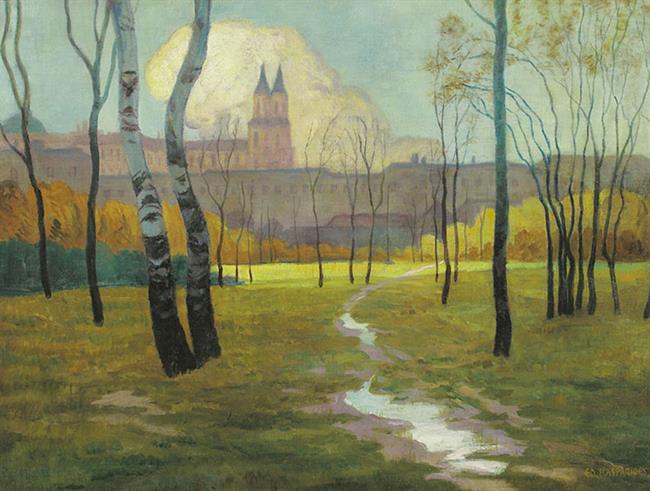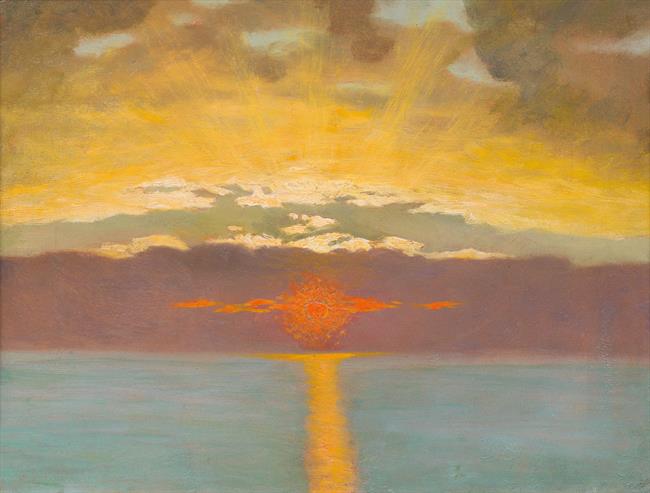 Autumn Park
around 1915-20
Autumn Park
around 1915-20
Eduard Kasparides
Krönau 1858 - 1926 Bad GleichenbergEduard Kasparides was born in Krönau (Moravia) in 1858. He was the nephew of the miniature painter Stanislaus and the painter Josef Kasparides, dyer in Policka. From 1876 to 1884, Kasparides studied painting at the Vienna Academy with Josef Trenkwalder, Carl Wurzinger and Christian Griepenkerl amongst his teachers. Educational journeys led him to Italy, Sweden, Russia and Germany. In 1886, he settled down in Vienna, where he became a founding member of the Artist’s Society "Hagenbund", as well as a member of the Society of Fine artists in 1894. In 1899, the painter received the Baron Königswarter artist’s prize, at the world exhibition of 1900 in Paris the “mention honorable”, the Drasche prize in 1911 and in 1912, the Great Golden Medaille of the State. Initially, Kasparides mainly produced genre and history paintings with religious themes. As of 1809, he increasingly turned to impressionistic evening landscapes with atmospheric content. Eduard Kasparides’ work can generally be described as containing romantic dispositions and his paintings are usually characterized by a fine sensualism. He shows a special fondness for motives around lake Mattsee. He is best known for gorgeous sunsets, which he mostly depicted in dark colours. Eduard Kasparides died in Bad Gleichenberg, Styria, in 1926.
-
Autumn Park around 1915-20
-
Sunset 1917

 Sunset
1917
Sunset
1917